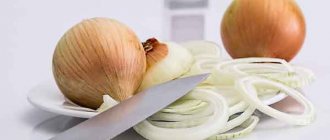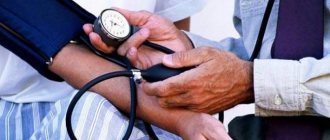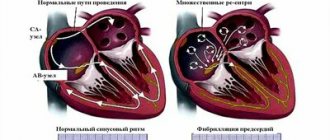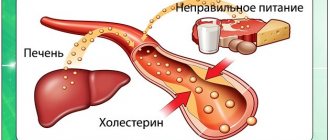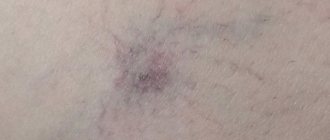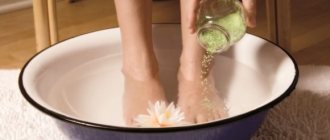The human cardiovascular system is constantly exposed to the negative influence of external factors. With age, the walls of blood vessels weaken, blood circulation is impaired, which can cause serious complications, including death. One of the most common pathologies of the vascular bed is thrombophlebitis. How dangerous is he? Is it possible to cope with the pathology without surgery? Are there preventive measures to prevent the development of pathology? Let's figure out what you need to do to stay healthy.
What is venous thrombophlebitis
Thrombophlebitis is an inflammatory pathology of veins, accompanied by the formation of blood clots. The main reasons for the development of the disease are:
- phlebeurysm;
- infectious diseases;
- changes in the composition and viscosity of blood;
- violation of the integrity of the vascular walls.
Most often, thrombophlebitis is localized in the veins of the lower extremities. In many cases, the pathology develops without obvious symptoms, accompanied by signs that a person attributes to simple fatigue. As a result, a trip to the doctor is postponed until the disease enters the acute phase, at which point conservative treatment methods become ineffective.
How to recognize the disease
Symptoms of thrombophlebitis are pronounced if the disease occurs in an acute form and is localized in the superficial veins. It is easy to recognize by:
- acute pain concentrated along the inflamed saphenous vein;
- redness, swelling, increased temperature in the area of the inflamed area of the vessel;
- swelling of the vein, which is clearly visible on the surface of the skin;
- the presence of seals in some parts of the vein in places of thrombosis;
- a general increase in body temperature, but not higher than 37.5-38°C;
- swelling of the soft tissues of the limb.
The elevated temperature lasts for several days, then subsides regardless of the condition of the limb, and other pronounced signs of thrombophlebitis gradually disappear. Often, patients do not consult a doctor, limiting themselves to applying a soothing ointment to the affected area. However, refusal of qualified assistance is extremely dangerous, since if a blood clot breaks off, severe complications can develop in a very short time, from ischemic or gangrenous thrombophlebitis to pulmonary embolism. Under no circumstances should you massage the affected area of the vein, as in this case the risk of blood clot rupture increases significantly.
The inflammatory process that develops in the deep veins of the limb is especially dangerous. Most often, it is asymptomatic or with minor general signs of malaise, by which it is impossible to recognize and localize the disease. The risk of thrombosis increases if the superficial veins are affected by varicose veins, accompanied by insufficient function of the valves of the perforating veins that connect the superficial and deep vessels.
Are you experiencing symptoms of thrombophlebitis?
Only a doctor can accurately diagnose the disease. Don't delay your consultation - call
Common methods of treating the disease
Treatment measures in case of thrombophlebitis can be:
- Conservative. The patient is prescribed medications for topical use that help resolve blood clots, as well as medications for oral administration that thin the blood.
- Surgical. When the problem becomes rampant, doctors are forced to use radical methods to save the patient’s life. The operation involves complete removal of the vein or excision of thrombosed nodes. If a floating thrombus is detected in a patient during diagnosis, installation of a vena cava filter is indicated.
Diagnostic methods
During the initial consultation, the doctor conducts a visual examination of the affected limb and collects an anamnesis, however, many important data necessary for diagnosing thrombophlebitis can only be determined with the help of instrumental studies:
- Ultrasound of superficial vessels to determine the extent and location of blood clots;
- Doppler ultrasound to identify the characteristics of blood flow in the vessels of the limb;
- rheovasography, which helps to identify disturbances in the blood supply to tissues and organs;
- Ultrasound duplex scanning of veins is the most informative study that allows you to determine all important diagnostic indicators - the speed and direction of blood flow, the condition of the venous wall, the level of preservation of the vein lumen, etc.
In addition, the doctor prescribes general laboratory tests to clarify the patient’s general health, and a coagulogram to determine blood clotting indicators and the tendency to form blood clots. Additional studies may be prescribed according to indications.
Home Recipes for Treating Thrombosis
There are proven folk remedies for the treatment of thrombophlebitis. The most common method is compresses:
- With honey. Apply slightly heated natural honey to a gauze bandage, wrap the leg in the problem area, secure the compress with a thick cloth, and leave for 2-3 hours. Do this for 3 days, after which increase the time of application of the compress to 6-8 hours a day.
- With wormwood. You need to crush a bunch of fresh flowers in a mortar and mix with thick sour milk. The proportion is approximately half. The mass should turn out mushy. Apply a tablespoon of the product to gauze, apply to the affected area, secure and leave for 1.5-2 hours. Repeat the procedure daily for 3-4 weeks.
- With Kalanchoe leaves and vodka. Grind 100g of the plant, pour in 500ml of vodka, pour the solution into a closed container and place in a dark place for a week. The liquid should be shaken once a day. Then strain the product and rub it on your legs every day from the foot to the thigh. The course of treatment is 1 month.
- With cabbage. Take a large leaf of white cabbage and apply vegetable oil to the side that you will apply to your leg. Fix the sheet to the affected area with gauze or soft cloth and leave for 6-7 hours. Repeat the procedure daily for a month.
- With tomatoes. Grind red tomatoes to a pulp, apply to gauze and apply to the problem area. Secure the compress with a cloth and leave for 2-3 hours. Repeat the procedure twice a day for 2 weeks.
Treatment of thrombophlebitis with folk remedies is also possible using solutions for internal use:
- With hops. Pour 1 tablespoon of pine cones with a glass of boiling water and heat in a water bath for 15 minutes. You need to take the solution twice a day, half a glass - after waking up and before going to bed.
- With the root of the field steelweed. 30g of crushed roots need to be poured into 400ml of water and boiled for 15 minutes. Then you need to let the solution brew for half an hour and strain. Take half a glass three times a day before meals.
- With nettles. 3 tablespoons of crushed leaves need to be poured into 500 ml of water, boiled, allowed to brew and strain. Take 100 ml three times a day an hour after meals.
How to prevent further development of the disease
Measures to prevent thrombophlebitis are equally effective both for those who have already suffered from an acute form of the disease and for people who are at risk of developing inflammation of the veins. These include:
- constantly wearing compression hosiery or supporting veins with elastic bandaging;
- proper organization of work and rest;
- moderate physical activity on the legs, providing support for the function of venous valves and preventing the progression of varicose veins;
- following a special diet;
- providing regular unloading for the legs in the form of a lying position with the legs raised above the body.
If these rules are followed, the risk of thrombophlebitis is significantly reduced.
Prevention of thrombophlebitis
Treatment of thrombophlebitis with folk remedies will help eliminate the unpleasant symptoms of the disease and normalize the condition of the vascular bed in the affected area. However, do not forget about preventive measures. The disease will quickly return if the following recommendations are not followed:
- It is necessary to give up bad habits. Drinking alcoholic beverages and smoking negatively affect the body, especially the cardiovascular and respiratory systems.
- The optimal temperature regime for the lower extremities should be ensured - no overheating/hypothermia.
- If you have a sedentary job, you need to do exercises every hour. This will help prevent blood stagnation in the vascular bed.
- During the warm season, you should avoid excessive exposure of your feet to direct sunlight.
There are also traditional methods of preventing the disease. The most effective remedy is herbs for thrombophlebitis. You can take tinctures of verbena officinalis, St. John's wort, string, plantain, broom, hazelnut leaves, licorice root. It is also necessary to follow the basic principles of proper nutrition:
- the basis of the diet is fresh vegetables and fruits, cereals, low-fat dairy products, nuts, lean meat and fish;
- drinking enough water during the day – at least 1.5 liters;
- eating small portions 5-6 times a day.
If you have thrombophlebitis, you should completely exclude the following foods from your diet:
- sausages, semi-finished products;
- confectionery, sweets;
- fatty meat, pork liver, soy products;
- all varieties of cabbage;
- legumes (beans, lentils, peas);
- bananas and black currants.
In order to cope with pathology without surgery, an integrated approach is required. Lead a healthy lifestyle, eat right, use the above-mentioned folk remedies, and regularly visit your doctor to monitor the disease.
Still have questions about the treatment of thrombophlebitis?
Free consultation with AngioClinic specialists
Author
Salmina Daria Vladimirovna
Geneticist. Graduated from the Chelyabinsk State Medical Academy. She completed an internship at the Northwestern State Medical University named after I.I. Mechnikov.
How to treat
To treat thrombophlebitis, modern medicine uses various methods, from drug therapy to surgical intervention, depending on the severity of the disease and its stage. Most patients are usually prescribed conservative therapy, the goal of which is to stop the inflammatory process and reduce the risk of vascular thrombosis. For this purpose, the doctor prescribes:
- anti-inflammatory non-steroidal drugs;
- anticoagulant medications;
- enzyme therapy;
- treatment with phlebotonics;
- local compresses and ointments;
- in the presence of a purulent process - antibiotic therapy.
The patient is prescribed bed rest, but he can be treated at home if there is no risk of complications. Mechanical support of the blood vessels is important: it is necessary to bandage the affected limb with an elastic bandage and/or wear special compression garments. If there is a risk of disease progression and transition to deep veins, surgical removal of the thrombosed vessel is prescribed.
Treatment of thrombophlebitis of the lower extremities with folk remedies
Thrombophlebitis is phlebitis (inflammation) of a vein caused by a thrombus (blood clot). When talking about this disease, we most often mean phlebitis of the venous walls of the lower extremities, caused by a blood clot formed in the lumen of the vein. Thrombophlebitis is diagnosed visually; an external examination of the affected area does not require further examination, but sometimes it may be necessary to monitor the pulse, temperature, pressure, study the condition of the skin and blood circulation. Treatment of thrombophlebitis of the lower extremities with folk remedies at various stages of the disease is often considered as an alternative method.
Drug treatment
Prescription of medications for thrombophlebitis should be comprehensive:
- anticoagulants reduce blood clotting;
- non-steroidal anti-inflammatory drugs and antibiotics act on the very cause of blood clots – infection;
- for severe pain, painkillers are used;
- special external ointments help dissolve blood clots; anti-inflammatory gels are also applicable;
- Enzyme therapy is carried out to dissolve the blood clot and eliminate swelling;
- the action of venotonics is aimed at strengthening the walls of blood vessels and increasing their elasticity;
- Angioprotectors may also be additionally prescribed.
For the treatment of thrombophlebitis, the use of rutin is important. It increases the tone of large vessels, strengthens their walls, reduces swelling and inflammation. Heparin contained in ointments is no less important. Their use allows you to avoid taking medications internally.
In the absence of severe complications, the effect of drug therapy is felt within a few days.
Compression treatment
This method is used most often in the chronic course of the disease, after inflammation has subsided, and for prevention. In addition, it is effective only for thrombophlebitis of the superficial veins . It is not prescribed for deep vein pathology.
Medical knitwear is used: tights, stockings, knee socks of different lengths and with compression class 2 or 3. The use of special elastic bandages is effective. Bandaging is carried out at the beginning of the day, and the bandages are removed at night. This helps maintain limb tissue in good shape. Knitwear and bandages prevent the expansion of veins and the separation of a blood clot. After a few days it may completely resolve.
Also, in chronic and subacute forms, warm compresses are prescribed. They improve blood circulation and elasticity of tissues and blood vessels.


